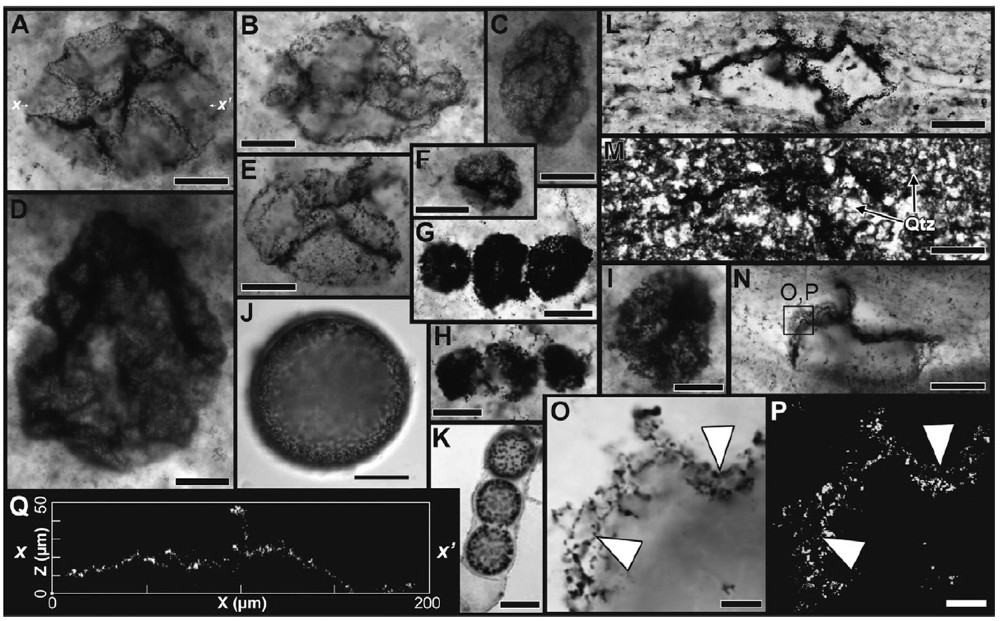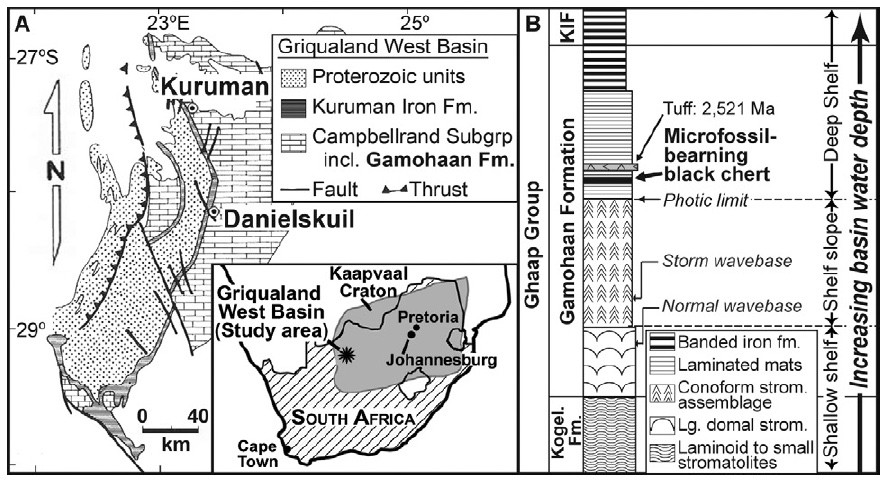Life before oxygen
Somewhere close to Earth’s creation and where we are today, researchers have exhibited that some early living things existed fine and dandy with no oxygen.
While specialists declare the principal half of our 4.5 billion-year-old planet’s life as an imperative time for the advancement and development of early microbes, prove for these living things stays scanty including how they made due when oxygen levels in the climate were short of what one-thousandth of one percent of what they are today.
Late topography look into from the University of Cincinnati shows new proof for microbes discovered fossilized in two separate areas in the Northern Cape Province of South Africa.
“These are the most seasoned announced fossil sulfur microbes to date,” says Andrew Czaja, UC partner educator of geography. “Furthermore, this revelation is helping us uncover a differing qualities of life and biological systems that existed only before the Great Oxidation Event, a period of major barometrical development.”
The 2.52 billion-year-old sulfur-oxidizing microbes are depicted by Czaja as extraordinarily vast, round formed, smooth-walled minuscule structures considerably bigger than most present day microscopic organisms, yet like some advanced single-celled living beings that live in deepwater sulfur-rich sea settings today, where even now there are no hints of oxygen.
In his examination distributed in the December issue of the diary Geology of the Geological Society of America, Czaja and his partners Nicolas Beukes from the University of Johannesburg and Jeffrey Osterhout, an as of late graduated ace’s understudy from UC’s bureau of geography, uncover tests of microorganisms that were copious in profound water regions of the sea in a geologic time known as the Neoarchean Eon (2.8 to 2.5 billion years back).
“These fossils speak to the most established known creatures that lived in an extremely dull, profound water condition,” says Czaja. “These microscopic organisms existed two billion years before plants and trees, which developed around 450 million years back. We found these microfossils safeguarded in a layer of hard silica-rich shake called chert situated inside the Kaapvaal craton of South Africa.”
With an environment of a great deal short of what one percent oxygen, researchers have assumed that there were things living in profound water in the mud that didn’t require daylight or oxygen, however Czaja says specialists didn’t have any immediate confirmation for them up to this point.
Czaja contends that discovering rocks this old is uncommon, so scientists’ comprehension of the Neoarchean Eon depend on tests from just a modest bunch of geographic territories, for example, this district of South Africa and another in Western Australia.
As indicated by Czaja, researchers during that time have hypothesized that South Africa and Western Australia were once some portion of an antiquated supercontinent called Vaalbara, before a moving and overturning of structural plates split them amid a noteworthy change in the Earth’s surface.
In view of radiometric dating and geochemical isotope investigation, Czaja describes his fossils as having shaped in this early Vaalbara supercontinent in an old profound seabed containing sulfate from mainland shake. As indicated by this dating, Czaja’s fossil microbes were likewise flourishing just before the period when other shallow-water microscopic organisms started making increasingly oxygen as a side effect of photosynthesis.
“We allude to this period as the Great Oxidation Event that occurred 2.4 to 2.2 billion years prior,” says Czaja.
Early recycling
Czaja’s fossils demonstrate the Neoarchean microscopic organisms in ample numbers while living somewhere down in the dregs. He battles that these early microscopic organisms were occupied with ingesting volcanic hydrogen sulfide –– the atom known to radiate a spoiled egg smell –– then emanating sulfate, a gas that has no odor. He says this is a similar procedure that goes on today as present day microorganisms reuse rotting natural matter into minerals and gasses.
“The waste item from one [bacteria] was nourishment for alternate,” includes Czaja.
“While I can’t guarantee that these early microscopic organisms are similar ones we have today, we deduce that they may have been doing likewise as some of our present microbes,” says Czaja. “These early microorganisms likely devoured the atoms broken up from sulfur-rich minerals that originated from land shakes that had dissolved and washed out to ocean, or from the volcanic stays on the sea depths’.
There is a continuous level headed discussion about when sulfur-oxidizing microorganisms emerged and how that fits into the world’s advancement of life, Czaja includes. “In any case, these fossils disclose to us that sulfur-oxidizing microscopic organisms were there 2.52 billion years back, and they were accomplishing something noteworthy.”

Microstructures here have physical characteristics consistent with the remains of compressed coccodial (round) bacteria microorganisms. Slide/Andrew Czaja, permission to publish by Geological Society of America
FUNDING
This work was bolstered by the National Geographic Society–Waitt Grant Program and the NASA Astrobiology Institute.
Czaja’s paper, “Sulfur-oxidizing microbes preceding the Great Oxidation Event from the 2.52 Ga Gamohaan Formation of South Africa,” was distributed in Geology, a diary of the Geological Society of America. (access to the full content online is FREE until Dec. 15)
The Department of Geology at the University of Cincinnati is a broadly positioned program with high-bore personnel and a solid research notoriety. The office educates and directs examine in numerous regions of the geosciences including fossil science, Quaternary geography, geomorphology, sedimentology, stratigraphy, tectonics, ecological topography and biogeochemistry. Personnel keep up cutting edge research centers and directs field work everywhere throughout the world, and our understudies are included at all times.
The Geological Society of America endeavors to be the head topographical society supporting the worldwide group in logical revelation, correspondence and utilization of geoscience information. Their main goal is to progress geoscience research and disclosure, administration to society and the stewardship of Earth and the geosciences calling.






